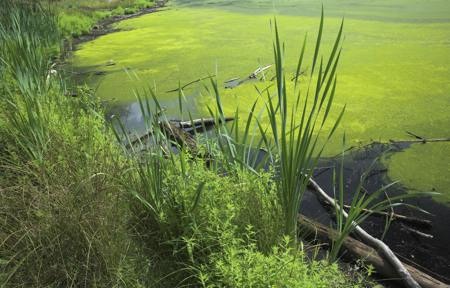Eutrophic lakes are very productive with lots of nutrient, algae, and aquatic plants. They can support lots of fish biomass. However, these lakes are subject to frequent algae blooms. The water in a eutrophic lake will be murky because of the high levels of phytoplankton and organic matter in the water column. Algal blooms can negatively impact fish by removing oxygen from the water when the bloom dies and decomposes. Eutrophic lakes are also typically deplete of oxygen in the bottom layers, which can limit the types of fish that can live in the lake.
Here you can see the high productivity of vegetation along the shoreline and algae on the surface of this eutrophic lake.
Location |
|
